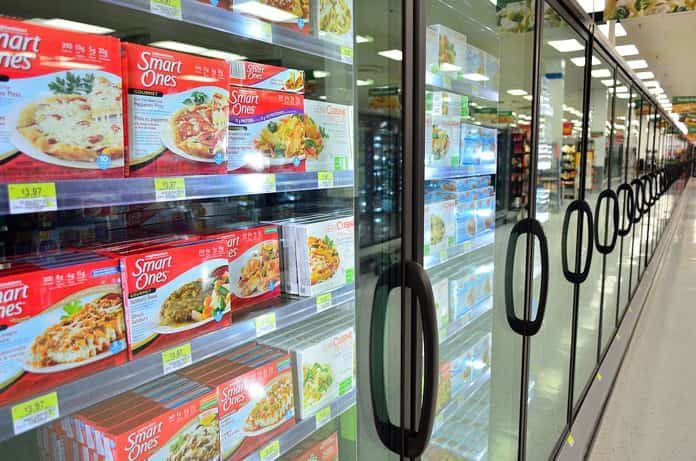A new review highlights different methods of food spoilage and the current strategies utilized around the globe for food preservation and processing.
Food preservation, which is defined as processes and techniques used to prevent food spoilage, allows for an increased food shelf life while retaining the food’s original nutritional value, color, texture, and flavor. Conventional food preservation techniques include drying, freezing, chilling, pasteurizing, and chemical preservation, while newer technologies currently being investigated include irradiation and high-pressure technology. The food processing business is worth nearly $7 trillion and is expected to continually increase with ongoing globalization and industrialization. A recent review by Amit and colleagues, published in Agriculture & Food Security, summarizes the different methods of food spoilage, as well as the mechanisms and techniques currently utilized in food preservation.
Mechanisms of Food Spoilage
Food spoilage can occur due to physical, microbial, or chemical mechanisms, resulting in unpleasant food conditions and reduced edibility. Physical spoilage is a consequence of changes in food moisture content, temperature, crystal growth, and crystallization. Suboptimal temperature conditions, for instance, can lead to the improper ripening of fruits and vegetables. Additionally, crystal growth may occur due to slow freezing or multiple freezing events of the product, and therefore negatively affect the quality of the product itself by inducing damage at the cellular level. Collectively, the proper ripening and storage temperature, as well as optimal moisture content is crucial for preventing physical food spoilage.
Food spoilage can also occur due to the action of microorganisms, including molds, yeasts, and bacteria. Microbial spoilage can be prevented or reduced by optimizing storage temperature, reducing water activity, lowering pH, add preservatives, and the use of proper packaging techniques. In contrast, chemical food spoilage involves chemical or biochemical reactions that lead to food malodour and poor taste.
The oxidation of amino acids and lipids (termed rancidifcation) for instance, in the presence of oxygen, can lead to color alteration, off-putting flavor, and toxic substance formation. Proteolysis, the chemical breakage of proteins, can lead to peptide by-products which often have bitter, sweet, or off-putting tastes. Putrefaction is a series of chemical reactions that can lead to food smelling bad. Other examples of chemical spoilage include the Malliard reaction, which leads to the darkening and browning of food, and hydrolytic rancidity, which leads to bad odour and poor tasting food.
Food Preserving and Processing Methods
Understanding the different mechanisms by which food can go bad is important because it provides insight into developing novel strategies for food preservation and processing. Physical processing of food includes several different strategies including drying, pasteurization, retorting, irradiation, high-pressure food preservation, and pulsed electric fields. Drying involves the removal of water from solid or liquid foods, via evaporation, to prevent microorganism-driven food spoilage. The removal of water also facilitates storage, packaging, and transportation of food by reducing the item’s weight and volume. Pasteurization involves heating food at high temperatures to destroy spoilage-causing microorganisms and enzymes.
Although drying and pasteurization are effective strategies that are widely utilized, they are also associated with loss of functional compounds and minerals. Other strategies to prevent food spoilage involve freezing or chilling food to reduce the rate of biochemical and microbiological changes. Novel strategies that are actively being investigated include irradiation, high-pressure food preservation, and pulsed electric fields. Irradiation involves substances undergoing a dose of ionizing radiation for disinfestation and inactivation of spoilage organisms and foodborne pathogens. High-pressure food preservation strategies utilize high pressures to kill microorganisms and inactivate spoilage, whereas pulsed electric fields involve the use of high voltage fields to destroy microorganisms.
Biological processing or fermentation uses microorganisms to prevent food spoilage. Not only does fermentation prevent spoilage, but it also enhances the nutritional value and makes it easier to digest the food. A more common method of food preservation is chemical processing, which uses preservatives and food additives to prevent spoilage and enhance shelf life. The addition of food additives and preservatives in food is carefully monitored and regulated because they may affect health. Preservatives act by inhibiting, retarding, or arresting the growth of microorganisms, whereas food additives function to improve and maintain the food’s nutritional value, enhance quality, and facilitate processing.
Novel Strategies Need to Be Continually Investigated
Proper food preservation and prevention of spoilage is important to increase shelf life, without compromising its nutritional value and taste. Understanding the mechanisms by which food can spoil (physical, chemical, and microbial) is crucial to developing more effective food preservation strategies. Current strategies include physical, biological (fermentation), and chemical preservation strategies; however, more novel strategies like irradiation, high-pressure food preservation, and pulsed electric fields need to be continually investigated.
Written by Haisam Shah, BSc
Reference: Amit, S. K., Uddin, M. M., Rahman, R., Islam, S. R., & Khan, M. S. (2017). A review on mechanisms and commercial aspects of food preservation and processing. Agriculture & Food Security, 6(1), 51.



